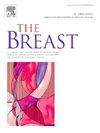The impact of adverse childhood experiences on pain and subjective cognitive decline in patients treated for localized breast cancer: The mediating role of sense of coherence, sense of danger and psychosocial distress and danger
IF 5.7
2区 医学
Q1 OBSTETRICS & GYNECOLOGY
引用次数: 0
Abstract
Background
Pain and subjective cognitive decline (SCD) are common sequala of breast cancer (BC) treatment. Adverse childhood experiences (ACEs) are associated with pain and adverse health outcomes in noncancer population. Sense of coherence (SOC) reflects the disposition that life is manageable and predictable. Sense of danger (SOD) is the extent of perceived danger to oneself and family from a specific stressor. We aimed to assess if ACEs are associated with pain and SCD in patients treated for localized BC, and whether decreased SOC, increased SOD from BC, and increased psychological distress mediate these links.
Methods
This study is a primary analysis of an on-going prospective trial, recruiting patients with localized BC before (neo) adjuvant oncological therapy. Patients completed validated questionnaires on ACEs, pain, SCD, SOC, SOD, and psychosocial distress. Demographic and clinical data were also collected.
Results
We performed an analysis of baseline assessments in 127 patients. After controlling for demographic and clinical factors that correlated with study variables, serial mediation analyses confirmed that ACEs were associated with increased pain and SCD. These links were mediated by decreased SOC, followed by increased SOD, followed by increased psychosocial distress (all p's < 0.001). The models explained 50.14 % of the variance in pain and 43.37 % of the variance in SCD.
Conclusion
Our study suggests that ACEs increase the risk of pain and SCD in patients with localized BC, mediated by SOC, SOD, and psychosocial distress. These factors should be addressed when aiming to reduce symptom burden in BC patients.
求助全文
约1分钟内获得全文
求助全文
来源期刊

Breast
医学-妇产科学
CiteScore
8.70
自引率
2.60%
发文量
165
审稿时长
59 days
期刊介绍:
The Breast is an international, multidisciplinary journal for researchers and clinicians, which focuses on translational and clinical research for the advancement of breast cancer prevention, diagnosis and treatment of all stages.
 求助内容:
求助内容: 应助结果提醒方式:
应助结果提醒方式:


